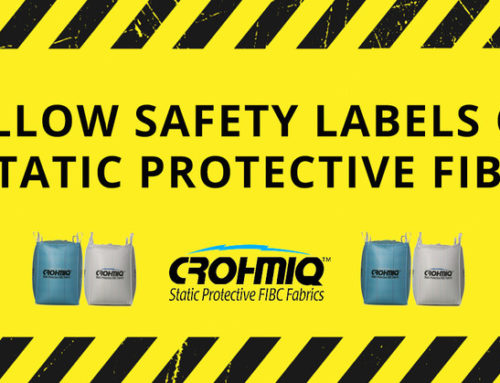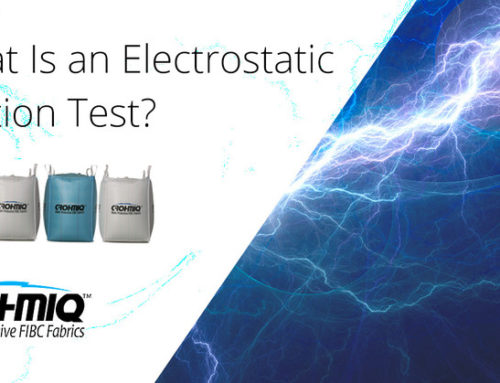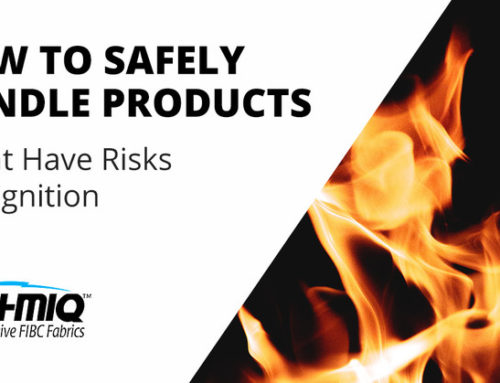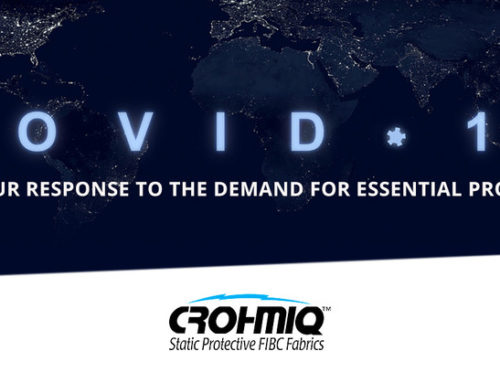FIBC bulk bags are designed specifically to help control static electricity. These are critical tools, especially in environments or jobs in which even a small discharge could cause a fire (or worse).
Every time an FIBC is filled and emptied, the flowing powders build up static electricity which must be safely and effectively prevented. This is an essential consideration in order to protect the combustible materials in an environment and, more importantly, the people who are working around those materials.
There are several types of materials available, and getting the right fabric to safely handle your product is imperative. So, let’s compare a couple of the most common and proven types of bulk bags to determine which will offer you the most safety assurance.
Type C FIBC Bulk Bags
Type C FIBCs – which are also known as ground-able FIBCs or conductive FIBCs – were originally made from entirely conductive materials. Now, however, they use a conductive surface or network to conduct any growing static charge and move it from the bag to the ground.
These bags have several important characteristics, including:
- Made of a non-conductive polypropylene fabric
- Conductive threads are usually sewn in a grid pattern throughout the fabric
- Conductive threads connect the bag to the ground through a grounding point
- Threads are interconnected throughout the bulk bag by sewing several panels of fabric together
Type C Bulk Bags and Safety
Type C FIBCs have been used for years, and they are generally safe – if the user is following every guideline. In other words:
- These bags provide safe and effective static protection if, and only if, they do not have any flaws in the manufacturing and are properly grounded.
- All of the conductive elements in Type C FIBCs have to be interconnected with the grounding tab – which must be grounded when it’s filled or emptied – in order to ensure safe usage.
- The connection to the ground is essential when using these bulk bags.
Potential for Human Error
Some studies have suggested that one of the leading causes of industrial accidents with Type C FIBCs is a broken or missing ground connection. Proper grounding, then, is just one of the several places where human error around these bags can lead to serious problems. There is also room for human error in the manufacturing of the bag, since sewing the bag together is a manual operation.
Proper Type C Usage
These bags are designed for:
- Transporting flammable powders
- Usage when flammable solvents, vapors, gases, or other combustible dusts are present in the bag
These bags should never be used when:
- There is no ground connection or it has been damaged
Many companies are justifiably concerned about the potential dangers of ungrounded Type C FIBC. There is another option for these companies in Type D FIBCs.
Type D FIBC Bulk Bags
Type D FIBC bulk bags provide full electrostatic protection without the grounding requirement. Users are protected from hazardous static discharges and they don’t have to worry about the potential of human error causing unforeseen problems.
These fabrics were designed to prevent incendiary sparks, brush discharges, and even propagating brush discharges without needing to connect the FIBC to a ground source.
The characteristics of these bags differ somewhat from the Type C bulk bags:
- The Type D fabric is made with antistatic properties that can dissipate static charges safely and prevent the small sparks that could potentially lead to explosive discharges.
- The static dissipative fabrics are designed to prevent incendiary sparks, brush discharges and propagating brush discharges without the need for a connection from the bulk bag to the ground.
Type D Bulk Bags and Safety
- The quasi-conductive yarns used in these bags safely dissipate static electricity with a safe, low-energy corona discharge.
- Type D fabrics eliminate the risk of human error associated with the manufacturing and use of ground-able bags.
- These bags are safe to use with combustible products and even for handling products in combustible or flammable environments.
Proper Type D Usage
These bulk bags are designed for:
- Safely transporting flammable powders
- Safely transporting products when flammable solvents or gasses are present in the bag
These bags should never be used when:
- The bag’s surface is covered with, or contaminated by, conductive materials such as water or grease
Minimizing Human Error
Type D FIBC fabric have no special construction requirements and don’t need to be grounded. This means they minimize the potential for human error by simply removing that step in the process.
When comparing Type D and Type C FIBCs, always consider the increased level of safety and how the characteristics of these different bags can minimize the potential for human error and maximize your efficiency on the job.





